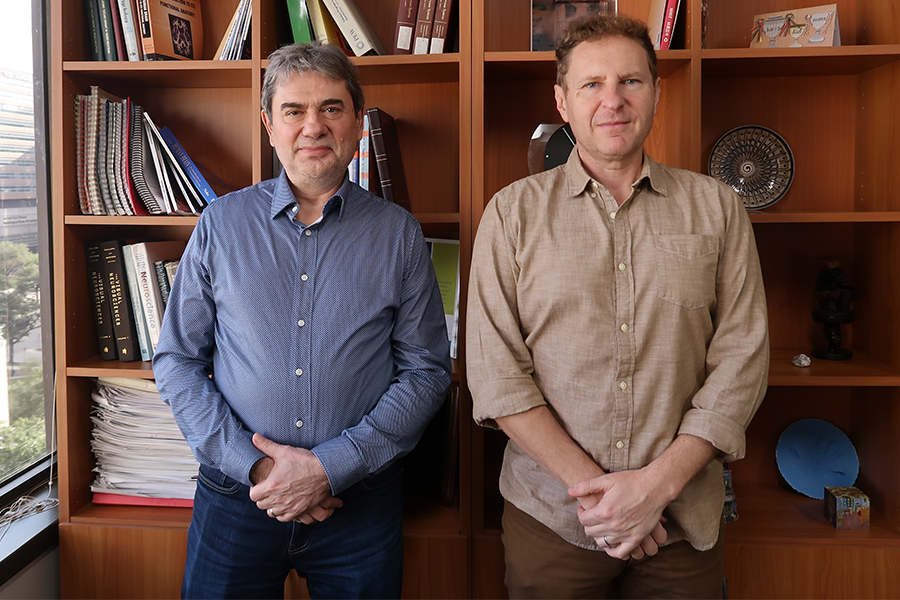Research in Dragoi lab on cortical populations published in Neuron

Research from the lab of Valentin Dragoi, PhD, Rochelle and Max Levit Distinguished Professor in the Neurosciences, studying neuronal interactions in visual and prefrontal cortical areas has been published in Neuron.
First author for the paper, titled “High-order interaction explain the collective behavior of cortical populations in executive but not sensory areas,” is Mircea Chelaru, PhD. Co-authors include Sarah Eagleman, PhD; Ariana Andrei, PhD; Russel Milton; and Natasha Kharas, MD, PhD.
“Information in neural populations is believed to be encoded in the collective activity of highly interconnected neural networks,” the authors wrote. “Describing the collective behavior of neural populations is a challenging task whose complexity is exacerbated by the combinatorial explosion of possible cell responses as the size of the population increases.”
Using chronically implanted arrays of electrodes, researchers recorded neurons in three brain areas, specifically visual areas V1 and V4, and downstream area of the dorsolateral prefrontal cortex while animals performed a behavioral task and while they were sleeping. During the behavioral task, animals performed a 60 to 90-minute image discrimination experiment. While resting they were placed in a dark, quiet room for 20 to 30 minutes with their eyes closed.
After monitoring the spiking activity of each cell, researchers grouped the responses together and formed binary words which described the state of the population in each brain area. The team then used these words to monitor how the activity of neurons in each area is predicted by a maximum entropy model.
“Our findings have general implications for our understanding of the detailed structure of spiking activity during wakefulness and sleep across cortical circuits,” the authors said.
The team’s research showed that pairwise (2nd order) interactions between neurons in early- and mid-level visual cortex capture more than 90 percent of detailed spiking patterns observed during wakefulness and sleep. However, pairwise interactions do not explain entropy in neuronal populations from executive brain areas, regardless of what state the brain is in.
“This implies that explaining the population dynamics in downstream, executive areas must necessarily involve higher-order interactions,” the authors said. “Surprisingly, although global brain state is typically associated with distinct patterns of cortical responses in sensory cortical areas, the pairwise-based model can robustly explain the structure of spiking activity in these areas. However, the fact that, regardless of brain state, pairwise interactions are insufficient to explain the spiking activity in prefrontal cortex may reflect the highly heterogeneous source of inputs that this area receives from multi-sensory, motor, and planning areas.”
In order to capture and interpret high-order interactions between neurons, large-cell assemblies and advanced computation techniques were required. “Our findings may reflect a general principle of cortical function across brain states, whereby the population responses in sensory areas is largely explained by pairwise interactions between neurons, whereas the responses in executive areas encoding decision making and action rely on higher-order interactions,” the authors said.
The discovery from the lab will lead to future research projects to examine other areas of the brain, outside of the visual and prefrontal cortex regions, including subcortical areas. The team also hopes to discover how adaptation and learning influence these neuronal interactions and what the spiking activities of these areas look like during recovery from stroke or other neural injuries.
“The basic issues addressed in our article have fascinated neuroscientists, computer scientists, mathematician, and physicists for the past decades, yet the results of previous studies were inconclusive” Dragoi said. “We believe that our work has generated an important result in systems neuroscience that offers a new framework for understanding the language of neural populations across brain areas.”